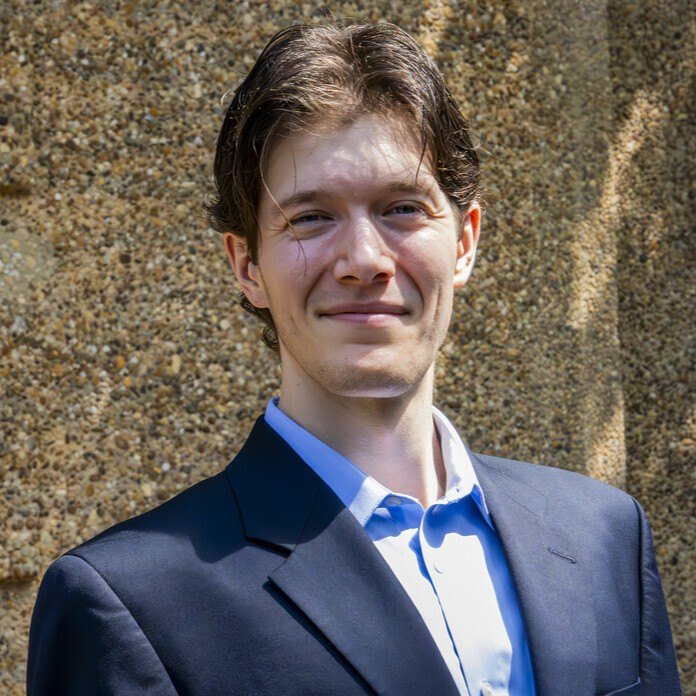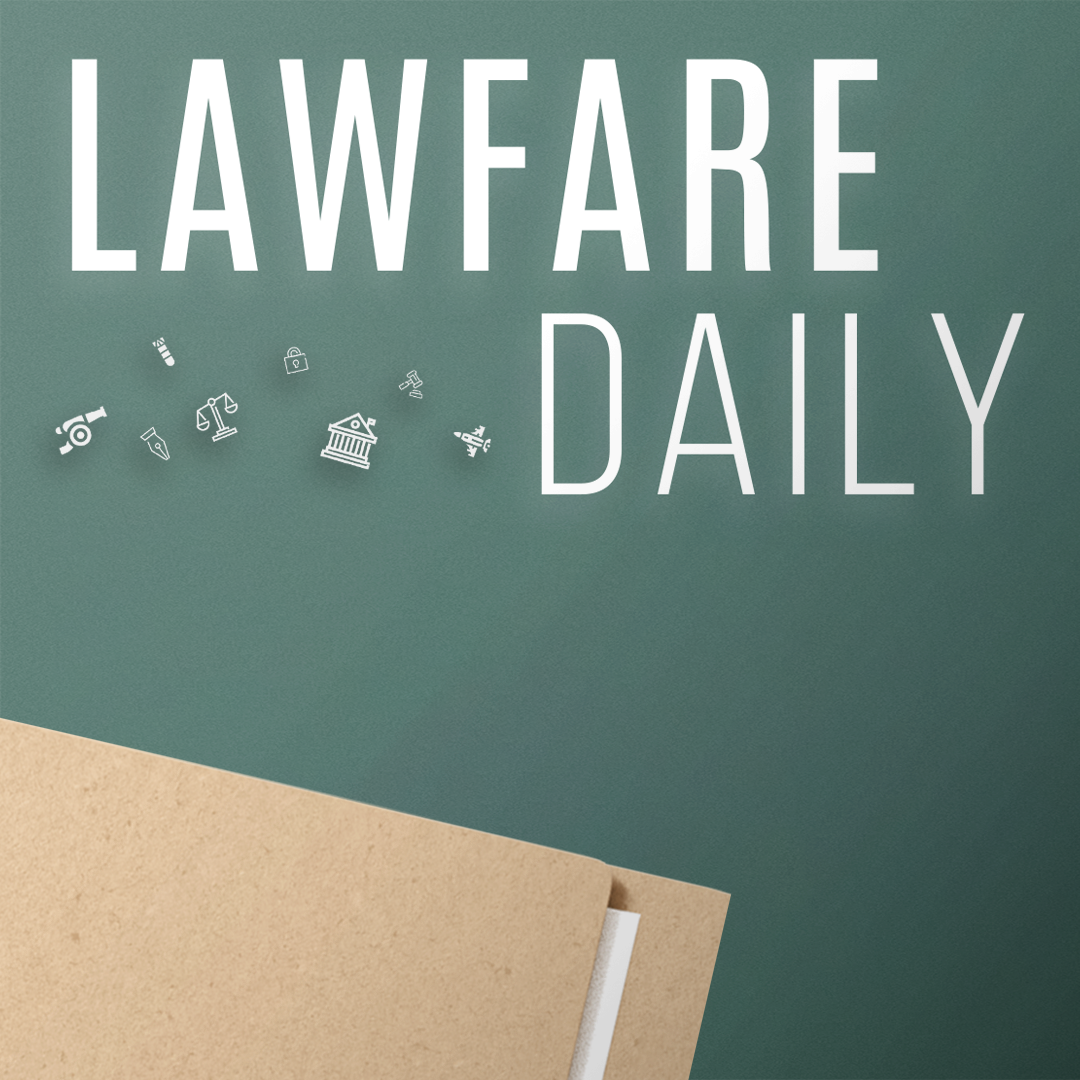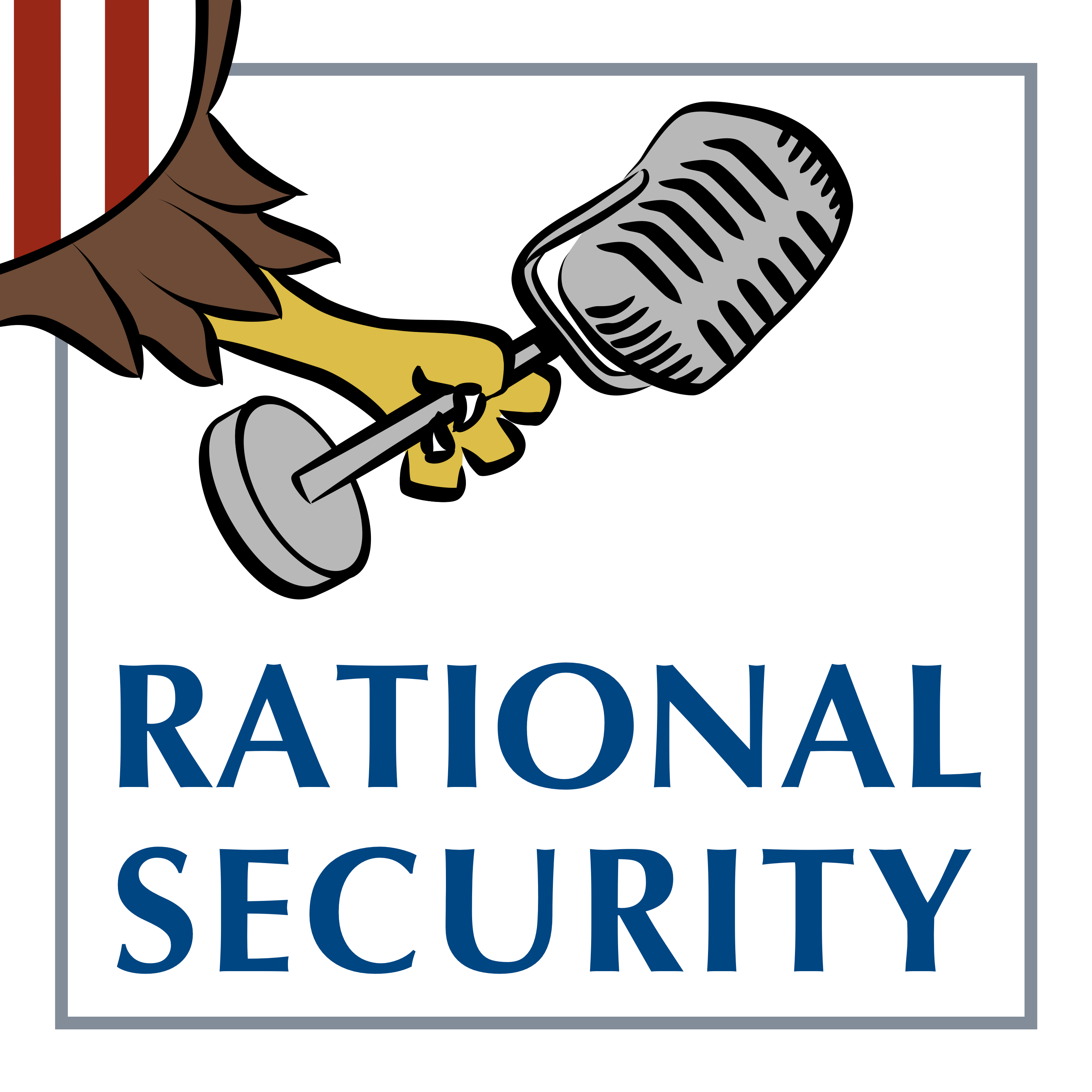Trump’s Immigration Policies Overlook AI Talent
.jpeg?sfvrsn=f8ab7a0d_7)
Published by The Lawfare Institute
in Cooperation With

At a July event titled “Winning the AI Race,” White House science adviser Michael Kratsios was asked a simple question: “What is the administration’s philosophy on recruiting the world’s best AI talent?” In response, Kratsios nodded, answered smoothly—and largely sidestepped the question’s focus on immigration policy for foreign-born scientists and engineers. Instead, he emphasized the importance of electricians, HVAC technicians, and other workers who build and maintain the physical infrastructure behind AI. He pointed to the administration’s AI Action Plan, which proposes training and apprenticeship programs to support these skilled trades. Only near the end did Kratsios affirm the value of attracting top scientists and engineers to the U.S., without proposing any visa or immigration reforms to make that happen.
Kratsios’s response was more than an offhand rhetorical choice—it reflects a broader policy stance. Despite devoting significant attention to immigration and AI as separate issues, the second Trump administration has not emphasized AI talent immigration as a strategic priority. Less than one year in, there have already been several major proposals and actions that could have a wide range of effects on AI talent pipelines, both positive and negative: ending duration of status for student visas, creating the $1 million Gold Card program, reforming H-1B visa selection, and much more. While the net impact of these policies is unclear in the long term, they point in many different directions on AI talent—indicating it simply isn’t a driving consideration in the administration’s immigration agenda. Indeed, White House AI adviser David Sacks stated last winter that “no one on the AI team will be working on immigration policy.”
Neglecting AI immigration comes at a cost. Talent is one of the core drivers of AI progress, and companies compete fiercely for it. Meanwhile, estimates suggest that approximately 72 percent of elite AI researchers hold undergraduate degrees from non-U.S. countries. If U.S. immigration policy repels these experts, then American AI leadership is at risk, which in turn could imperil America’s economic and military strength.
It’s not too late to make AI talent an explicit priority. High-skilled immigration enjoys remarkably strong voter support and avoids many common critiques of illegal immigration. All that’s needed is an administration official with the foresight to push for winning the talent war.
The Importance of AI Talent
AI advancements depend heavily on the ingenuity of skilled researchers, who are often born abroad. The success of the Chinese AI startup DeepSeek is a telling example. DeepSeek did not succeed because of abundant computing power or unusually large training datasets; it achieved its results despite relatively modest resources. Its main advantage arguably lay in AI talent.
Well before DeepSeek’s rise to fame, Anthropic co-founder Jack Clark assessed an impressive paper from DeepSeek and concluded that the company had “inscrutable wizards” who can perform “NVIDIA dark arts” to optimize AI chip performance. SemiAnalysis, an influential firm analyzing the AI hardware industry, said it “has long maintained that DeepSeek is extremely talented” and linked to a social media post lauding DeepSeek as “omega cracked” (internet slang for “exceptionally skilled”). Research from the Hoover Institution found that, by some academic citation metrics, DeepSeek’s core contributors were comparable in ability to researchers at OpenAI. Accordingly, OpenAI CEO Sam Altman has commented that “the DeepSeek team is very talented.” This impressive team devised algorithmic innovations that let R1 perform well with fewer computing resources.
Nowhere is the value of AI talent clearer than in the industry’s ongoing talent war, where nine-figure compensation packages for top researchers have begun to rival those of top athletes. Meta CEO Mark Zuckerberg reportedly courted one Australian genius with compensation potentially worth over $1 billion across six years. In other cases, venture capitalists have delivered multibillion-dollar funding rounds to new startups that have completed nearly no work publicly, but employ leading figures in the AI industry. Less successful startups have effectively sold key employees to larger AI companies in pricey “acquihire” deals.
Indeed, some of the most prominent AI researchers grew up overseas or benefited from immigration to the United States. The three “godfathers” of AI—Yoshua Bengio, Yann LeCun, and Geoffrey Hinton—were born in France and England, while the “godmother” of AI, Fei-Fei Li, grew up in China. Six of the eight authors who introduced the Transformer architecture, arguably the most important algorithmic breakthrough fueling modern AI, were born outside the United States. OpenAI’s original nine-member research team included people who had spent years living in Israel, Canada, Hong Kong, Slovakia, the Netherlands, and Poland—thus, it appears that a majority of OpenAI’s founding researchers were immigrants.
More generalizable data backs up these anecdotes. Research from the Institute for Progress found that in Forbes’s latest “AI 50” list of promising AI startups, 60 percent of U.S.-based companies on the list had at least one immigrant co-founder—a pattern that held in 2023 and 2019 as well. Collectively, these results suggest that immigrants help launch the majority of America’s top AI startups, despite comprising only around 14 percent of the U.S. population. Immigrants’ overrepresentation also appears in higher education, where non-U.S. citizens earn the majority of U.S. doctoral degrees in AI-related fields. These findings align with economics research suggesting that certain immigrants to the U.S. are highly innovative and entrepreneurial.
Consider Silicon Valley, America’s world-renowned innovation hub, as an illustrative example. Today, roughly 70 percent of college-educated tech workers there were born outside the United States, reflecting dramatic increases during previous decades. According to a 2017 Bureau of Labor Statistics analysis, the share of foreign-origin workers in Silicon Valley’s “creative computer occupations”—roles focused on designing and developing new technologies—rose from about 15 percent in 1980 to around 70 percent on average between 2005 and 2009. By comparison, other U.S. metropolitan areas with major tech innovation clusters (such as Seattle and Austin) saw their foreign-origin share grow from about 6 percent to 30 percent over the same period. Silicon Valley thus stands out as a clear outlier, both in the scale of its technological innovation and in the exceptionally high presence of foreign-born professionals. Though correlation is not causation, what happened in Silicon Valley is hard to ignore.
Mixed Messaging for AI Talent
Many of the Trump administration’s immigration-related actions will influence whether American businesses can attract and retain AI talent. But the administration’s current approach seems indifferent to these impacts, overlooking the centrality of immigration to AI innovation.
One notable example is the proposed rule to end “duration of status” for student visas. Currently, most international students can stay as long as they need to complete their degrees—for the duration of their status. The administration’s new proposed rule would cap all stays at four years. That would include Ph.D. students, whose programs normally take longer than four years. If students need more time, they’d have to apply for an extension. A recent survey of international students found that, among those planning to complete a Ph.D. program and stay in the U.S., 18 percent would “definitely” not have chosen to study in the U.S. if such a rule were in place, and another 31 percent would “probably” not have. Thus, this proposal could dissuade talented people from entering the country.
Consider next the proposed “Gold Card” program. Details are evolving, but the general idea is that applicants would pay a $15,000 processing fee and undergo vetting before paying $1 million to unlock expedited approval for a green card. However, Indian and Chinese immigrants might still have to wait for years after paying $1 million, due to country-specific restrictions on annual green card issuances. This limits the Gold Card’s potential in AI—approximately one-third of elite AI researchers come from India or China. Of course, the most glaring limitation is that most people don’t want—or cannot afford—to pay a million dollars. So although the Gold Card certainly has potential to support AI talent, it may end up helping only a handful of AI research celebrities.
Then there’s the proposed H-1B wage selection rule, which is genuinely puzzling. H-1B visas allow U.S. employers to hire foreign professionals for several years to work in jobs that require specialized knowledge, such as engineering and technology occupations. Typically, employers seeking an H-1B visa for a new hire must first register the candidate with the government by providing basic identifying information. U.S. employers file hundreds of thousands of these registrations every year, far exceeding the 85,000 new H-1B visas that the government can actually award (with exceptions for some “cap-exempt” employers like universities). To narrow down the applicant pool, the government uses two random lotteries to determine who may advance to the next stage. All registrants enter the first draw, and U.S. graduate-degree holders who are not selected get a second draw. Everyone in each lottery has equal odds.
Under the Trump administration’s proposed rule, instead of pure randomness, applicants would have better odds if their offered wage falls into a higher government-defined wage tier for their occupation. That sounds like a way to favor top talent—yet in practice it would mostly favor more senior workers. It prioritizes applicants who out-earn typical workers in their own occupation, not necessarily those with the highest salaries overall. As a result, someone could land in a top wage tier and gain priority, even if their pay is modest in absolute terms. For example, a mid-career event planner paid more than most event planners could outrank an early-career AI engineer. For this reason, analysis from the Institute for Progress indicates that the median salary for H-1B recipients would rise only 3 percent—hardly a win for AI talent. The administration’s separate $100,000 fee for H-1B petitions could make employers prioritize high earners, but it has its own loopholes, may apply to cap-exempt employers, and faces legal challenges.
The administration might still refine these projects to better support AI talent, but the rollout thus far gives cause for skepticism. The end of duration of status could deter talented students. The Gold Card might help a narrow set of candidates. The H-1B wage rule lands somewhere in between, slightly favoring higher earners but not reliably supporting AI experts.
These three policies sit within a broader set of actions and plans: student visa revocations and threats; social media vetting requirements; increased scrutiny of naturalization applicants’ moral character; travel bans; clashes and deals with universities; attempts to restrict birthright citizenship; science funding cuts; employer audits and worksite raids; scans for “anti-American” activities; in-person interview requirements; deployment of armed agents at U.S. Citizenship and Immigration Services; and much more.
Although most of these initiatives do not specifically target high-skilled workers, they still matter for AI talent. Potential immigrants may react strongly to perceived hostility, bureaucratic friction, or uncertainty about their future. Even if any single measure appears insignificant in isolation, the cumulative signal shapes where talented people choose to build careers.
Early indicators already point toward unease. Travel to the U.S. has dropped significantly. Stories are emerging of high-profile scientists leaving the country and students rethinking plans to enter. One economics paper suggests that rising U.S.-China tensions during Trump’s first administration already repelled some Chinese researchers. Data from Studyportals showed abnormally low interest in U.S. Ph.D. programs in April, which could yield a weaker applicant pool.
However, the long-term, cumulative effect across all of Trump’s current and future policies remains hard to predict with certainty. For example, some observers expected a large drop in international student enrollment this year, but early government data suggests a milder impact.
The core issue remains straightforward: There is no clear strategy to attract AI talent. Thus far, the administration seems to have pursued immigration goals driven by other priorities, such as curbing illegal immigration, protecting native-born workers, avoiding security risks, and prioritizing perceived civic compatibility. The H-1B reforms and Gold Card reveal at least a slight intention to favor high-skilled, high-wage immigrants, which could support AI talent pipelines. But overall, AI immigration appears to be an afterthought.
AI Immigration Has Few Downsides for the U.S.
In December, White House AI adviser David Sacks responded to MAGA activist Laura Loomer’s concerns about potential green card reforms, saying, “I think we can also agree that before even discussing legal immigration, we should completely seal the border and stop migrant crime like the insane NY Subway attack.” But the concerns Sacks invokes simply don’t apply to AI researchers, who are highly educated and unlikely to commit crimes—in both 2004 and 2016, well over 90 percent of all state and federal prisoners lacked a college degree. More broadly, many voter fears about illegal immigration—whether related to crime, terrorism, or taxpayer costs—are largely irrelevant to legal immigration for AI talent. For example, as high earners, AI experts likely contribute significantly more in tax dollars than they consume through public benefits.
One legitimate concern is that many talented AI researchers come from China, and a tiny fraction of these researchers might steal trade secrets for the Chinese Communist Party. However, there are many other ways to deter espionage besides restricting immigration pathways. For example, top AI companies could tighten their cybersecurity and vet potential employees, perhaps in partnership with the U.S. government. Further, China is already close behind the U.S. in AI, so there is only so much it can gain by copying American tactics. Finally, there are economic and national security benefits to Chinese AI researchers entering the United States, such as their contributions to America’s AI industry. Talented people will continue to exist no matter how the U.S. crafts its immigration policy; the question for policymakers is where those people should live and work to best support U.S. interests.
Another reasonable concern is that foreign talent would compete with some U.S. citizens in the labor market, potentially leading to job losses or lower wages. But the magnitude and distribution of these harms are difficult to predict. Meanwhile, skilled AI professionals can create jobs through innovation and entrepreneurship, and immigration restrictions may push multinational companies to acquire firms overseas and hire outside the U.S. Ultimately, policymakers must grapple with a genuine trade-off: prioritizing U.S. leadership in arguably the most important industry of the future, or elevating the share of AI jobs held by native-born Americans—even if that makes the industry smaller or less competitive.
Given these limited downsides, immigration policy supporting AI talent should be politically viable. Indeed, voters strongly support the broader category of high-skilled immigration. Pew Research found in 2018 that 78 percent of U.S. adults support “encouraging highly skilled people to immigrate and work in the U.S.” Another Pew poll from 2024 found that 71 percent of Trump supporters and 87 percent of Harris supporters favor “legally admitting more high-skilled immigrants.” In short, polling data suggests there’s substantial room for policy action on AI immigration without significant political cost.
Winning the AI Talent War
The U.S. immigration system has suffered from long-standing issues predating Trump’s second term, such as complex rules, processing backlogs, and long wait times. As one OpenAI researcher put it this year after his colleague struggled to get a green card, “I’ve seen enough visa horror stories since [2012] to know that the brokenness of high-skilled immigration in America is persistent.” Another senior researcher stated back in 2019 that his collaborators’ visa restrictions have been “one of the largest bottlenecks to our collective research productivity over the last few years.” This sentiment is common: In a 2021 survey of AI researchers, 69 percent of U.S.-based respondents reported that visa and immigration issues facing foreign researchers and students were a serious problem for conducting high-quality AI research.
Meanwhile, other countries are advancing their own strategies to attract and retain AI-related talent. China recently introduced a “K visa” designed to attract young STEM professionals. The U.K. government has created a Global Talent Taskforce and launched a 54 million pound Global Talent Fund to recruit world-class research and tech talent. The competition for AI researchers is not national—it is global.
By making AI talent a priority in immigration policy, the Trump administration can strengthen America’s long-term technological position. Targeted reforms that streamline pathways for AI researchers can be implemented without compromising the administration’s broader immigration objectives. The choice is straightforward: Make it easier for the world’s best AI minds to work in America, or watch them build the future elsewhere.





